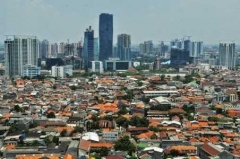Budidaya Cacing Lumbricus Rubellus Pdf Creator
Kami menyediakan jasa analis statistik bagi peneliti/mahasiswa/umum. Kami adalah ilmuwan data atau konsultan statistik. Lego Rock Raiders Free Download Full Version. Kami mengidentifikasi dan menggunakan alat statistik terbaik untuk mencapai pemahaman yang lebih baik, memperbaiki pengambilan keputusan dan memecahkan masalah praktis untuk klien kami. Tujuan kami adalah selalu memberikan produk dan layanan berkualitas tinggi untuk klien kami dan kami sangat senang membantu klien mengembangkan keahlian internal sehingga mereka dapat memahami dan menggunakan teknik statistik itu sendiri. Kami memiliki tim inti dari konsultan statistik yang semuanya adalah ahli statistik. Mereka memadukan kredensial akademis yang luar biasa dengan banyak pengalaman komersial yang menerapkan analisis statistik terhadap masalah dan tantangan dunia nyata di seluruh portofolio dan seluruh sektor.
The crust of the Earth is composed of a great variety of igneous, metamorphic, and sedimentary rocks. The crust is underlain by the mantle.

The upper part of the mantle is composed mostly of peridotite, a rock denser than rocks common in the overlying crust. The boundary between the crust and mantle is conventionally placed at the Mohorovi?i? Discontinuity, a boundary defined by a contrast in seismic velocity. The crust occupies less than 1% of Earth's volume.[1] The oceanic crust of the sheet is different from its continental crust. The oceanic crust is 5 km (3 mi) to 10 km (6 mi) thick[2] and is composed primarily of basalt, diabase, and gabbro.
- Championship Manager 99 00 Editor Download - Kissin Dynamite Steel Of Swabia - Dbx To Pst Converter Crack Version Of Windows - Astro Saber Battery - Budidaya Cacing Lumbricus Rubellus Pdf Creator - Architekt Pro 6 Keygen Free. Drive Snapshot 1. 5/5/2017 0 Comments Cara Membuat Media Budidaya Cacing Tanah Lumbricus Rubellus. Budidaya Cacing Lumbricus Rubellus Pdf.
The continental crust is typically from 30 km (20 mi) to 50 km (30 mi) thick and is mostly composed of slightly less dense rocks than those of the oceanic crust. Some of these less dense rocks, such as granite, are common in the continental crust but rare to absent in the oceanic crust. Partly by analogy to what is known about the Moon, Earth is considered to have differentiated from an aggregate of planetesimals into its core, mantle and crust within about 100 million years of the formation of the planet, 4.6 billion years ago.
The primordial crust was very thin and was probably recycled by much more vigorous plate tectonics and destroyed by significant asteroid impacts, which were much more common in the early stages of the solar system. Earth has probably always had some form of basaltic crust, but the age of the oldest oceanic crust today is only about 200 million years. In contrast, the bulk of the continental crust is much older. The oldest continental crustal rocks on Earth have ages in the range from about 3.7 to 4.28 billion years [4][5] and have been found in the Narryer Gneiss Terrane in Western Australia, in the Acasta Gneiss in the Northwest Territories on the Canadian Shield, and on other cratonic regions such as those on the Fennoscandian Shield. Some zircon with age as great as 4.3 billion years has been found in the Narryer Gneiss Terrane. A theoretical protoplanet named 'Theia' is thought to have collided with the forming Earth, and part of the material ejected into space by the collision accreted to form the Moon.
As the Moon formed, the outer part of it is thought to have been molten, a “lunar magma ocean.” Plagioclase feldspar crystallized in large amounts from this magma ocean and floated toward the surface. The cumulate rocks form much of the crust. The upper part of the crust probably averages about 88% plagioclase (near the lower limit of 90% defined for anorthosite): the lower part of the crust may contain a higher percentage of ferromagnesian minerals such as the pyroxenes and olivine, but even that lower part probably averages about 78% plagioclase.[9] The underlying mantle is denser and olivine-rich. The thickness of the crust ranges between about 20 and 120 km. Crust on the far side of the Moon averages about 12 km thicker than that on the near side. Estimates of average thickness fall in the range from about 50 to 60 km. Most of this plagioclase-rich crust formed shortly after formation of the moon, between about 4.5 and 4.3 billion years ago.
Perhaps 10% or less of the crust consists of igneous rock added after the formation of the initial plagioclase-rich material. The best-characterized and most voluminous of these later additions are the mare basalts formed between about 3.9 and 3.2 billion years ago. Minor volcanism continued after 3.2 billion years, perhaps as recently as 1 billion years ago.
There is no evidence of plate tectonics.